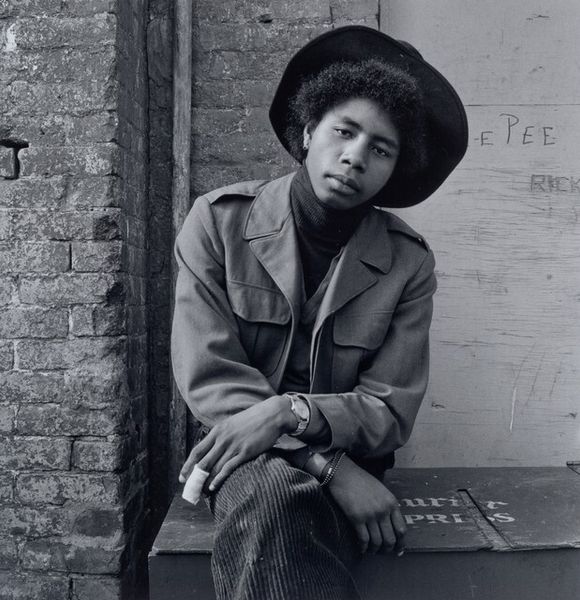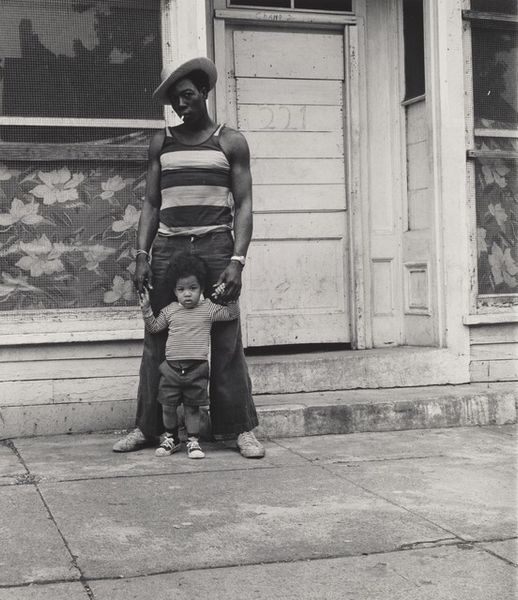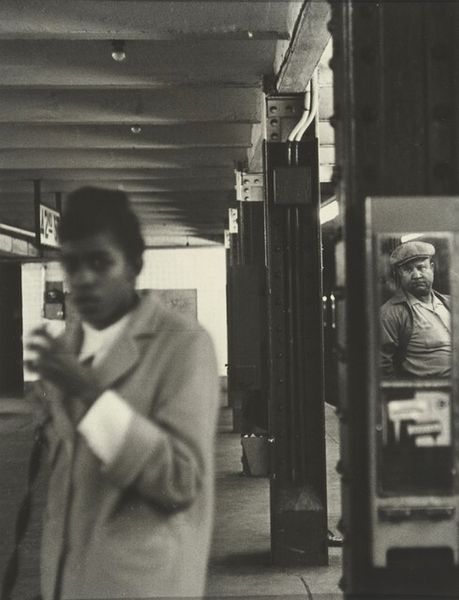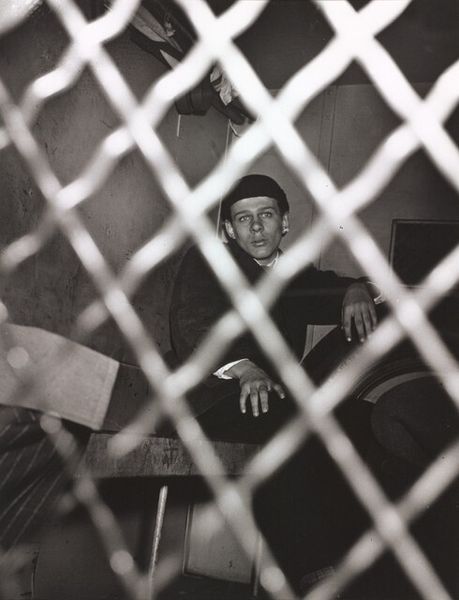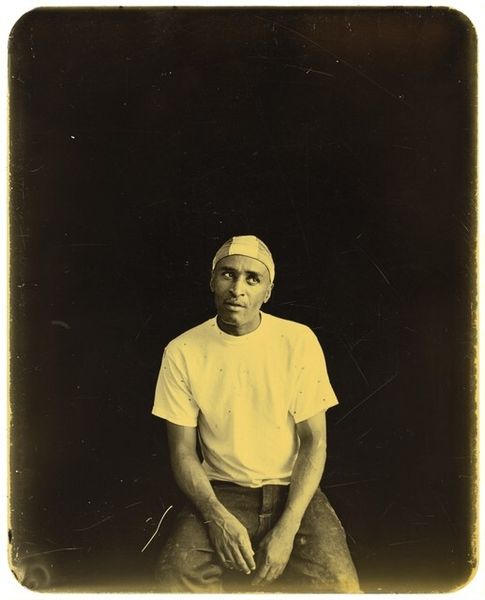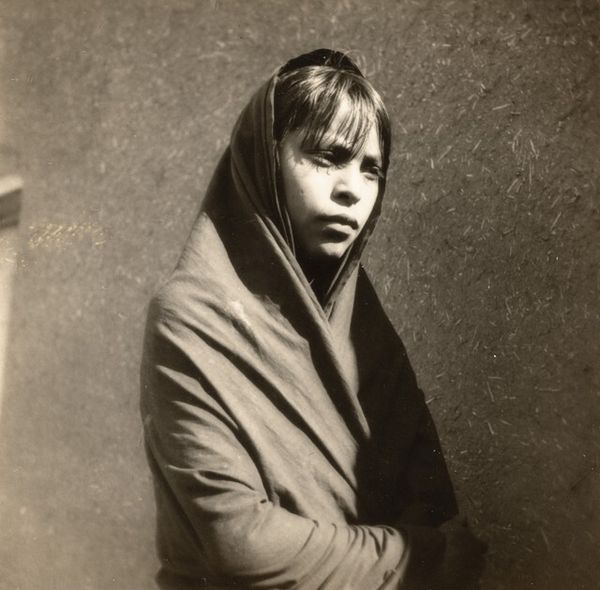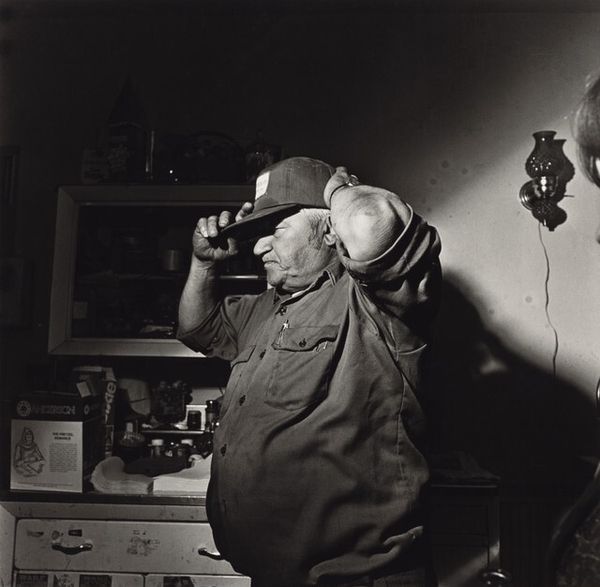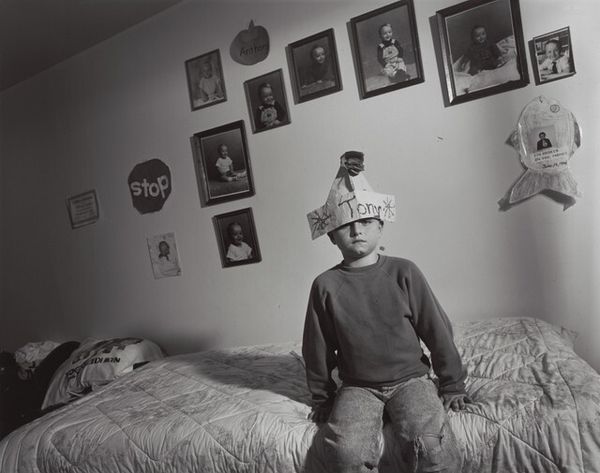
Dimensions: image: 16.8 x 16 cm (6 5/8 x 6 5/16 in.) sheet: 25.2 x 20.2 cm (9 15/16 x 7 15/16 in.)
Copyright: National Gallery of Art: CC0 1.0
Editor: This is a photograph by Milton Rogovin, titled "Robert 'Chino' Montalvo (Lower West Side series)," from 1984. It's a black and white gelatin silver print, and the subject seems pretty calm and collected. It’s almost a confrontational stare. What strikes you when you look at it? Curator: It's powerful precisely because of its simplicity and apparent lack of artifice. Rogovin dedicated his career to documenting working-class families and communities, particularly those marginalized by society. The Lower West Side series, and this image in particular, gains significance when considered within that broader project of social documentation. How does Rogovin's choice of location impact the way you see Robert "Chino" Montalvo? Editor: The setting—the graffitied door, the worn brick—definitely tells a story. It’s not just a portrait of a person; it’s a portrait of a place and, maybe, a specific time. Does the backdrop give more context? Curator: Precisely. The setting contextualizes Robert, placing him within a specific socio-economic reality. The "Lower West Side series" wouldn’t have the same impact in another part of town or city, because of the public role Rogovin envisions for art. The surrounding environment speaks of struggle, resilience, even defiance, given the presence of the graffiti. This work is inseparable from Rogovin's belief in the camera's capacity to bear witness. Would you consider it a political work? Editor: Absolutely. Highlighting a community that’s often ignored or misrepresented is inherently political. Rogovin seems to be using his art to advocate for visibility and understanding. So would you classify his style as some sort of social realism? Curator: You're on the right track. There’s a social realist element, yes, but the political and humanitarian elements within it push further beyond the simple descriptor, and into an examination of what it meant to be othered during this particular time. We can start to understand how that works through considering Robert's gaze. Editor: That’s interesting! I now look at the photograph with an enriched awareness of how art shapes and is shaped by society.
Comments
No comments
Be the first to comment and join the conversation on the ultimate creative platform.

